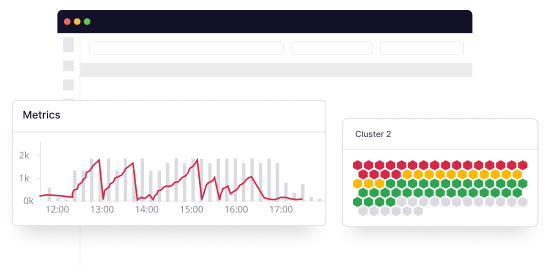In 2025, DevOps will be the driving force revolutionizing software delivery. This seamless fusion of software development and IT operations epitomizes agility, efficiency, and customer-centricity.
In response to the need for faster software delivery, DevOps not only adapts but expands its scope with amendments to development practices. It also advocates automating various IT processes(including CI/CD and monitoring), which can help further improve the efficiency and quality of new service delivery.
What is DevOps?
DevOps is a term that refers to the collaborative processes and practices between development and operations teams. It includes aspects like security, data analytics, and much more.
But what does it mean?
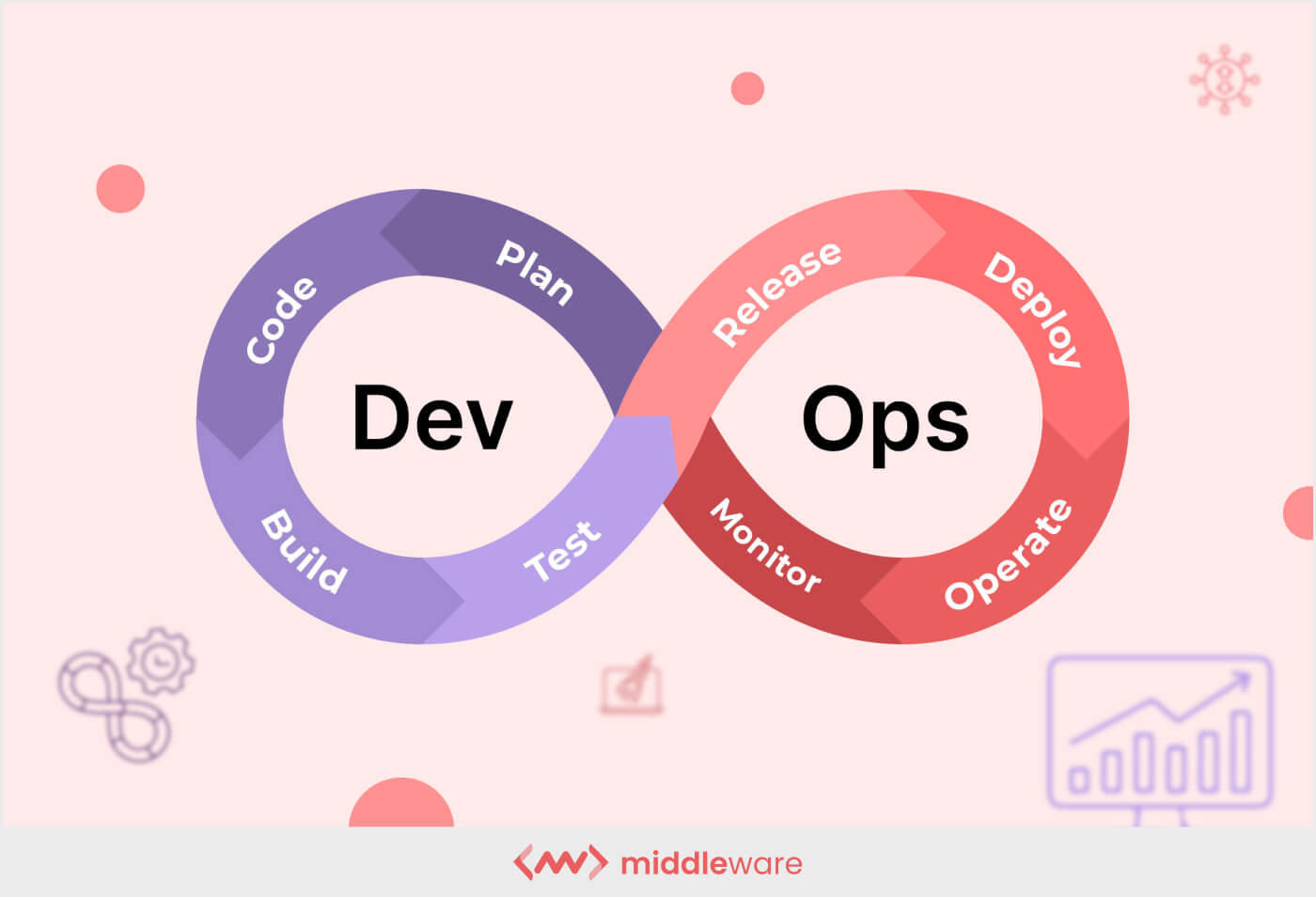
Although DevOps is not a product or technology, environments that use it frequently use standard approaches. They consist of the following:
- Tools for continuous integration and delivery, also known as a continuous deployment (CI/CD), with a focus on job automation;
- Platforms for communication, real-time monitoring, incident management, system integration, and other DevOps adoption-supporting technologies and tools; and
- Microservices, containers, and cloud computing are deployed simultaneously with DevOps approaches.
DevOps is speeding up the time to get an idea from development to deployment in a production environment. Development and operations teams must frequently communicate. Scalability and flexible deployment are required. IT operations and developers work collaboratively to speed up software builds, testing, and deployment without compromising quality. Developers typically code in a conventional development environment.
How does DevOps work?
An approach called DevOps aims to enhance productivity throughout the whole software development lifecycle. The DevOps loop comprises the following steps:
- Plan
- Code
- Build
- Test
- Release
- Deploy
- Operate
- Monitor
- Feedback
DevOps aims for IT teams to write software that fully satisfies user needs, with no wasted time in deployment, and which runs smoothly from the outset. To do this, organizations utilize a mix of culture and technology.
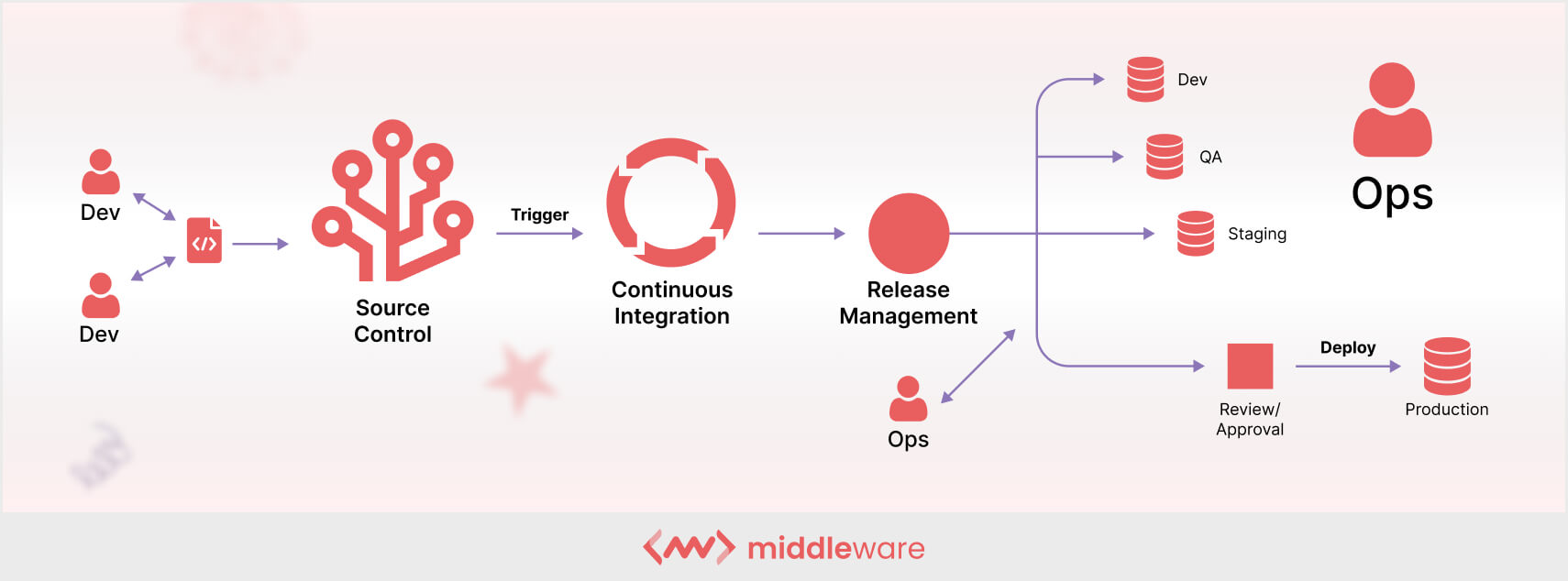
They employ a technological stack and tooling that facilitate applications’ speedy and dependable operation and evolution. Using these technologies also enables engineers to autonomously complete activities (such as deploying infrastructure or delivering code) that previously required assistance from other teams, further boosting a team’s productivity.
Continuous integration, which involves several developers committing updates to a common repository often throughout the day, is frequently used in association with DevOps implementation. Continuous integration speeds up code branches and helps developers quickly find integration problems and bugs.
With this all-encompassing perspective, engineers can work together to define standard procedures like testing, quality gates, and service-level objectives (SLOs). As a result, rapid workflows can be streamlined by a shared set of standards and goals, and teams can deploy a coordinated DevOps toolkit to automate the software delivery life cycle.
Benefits of DevOps
DevOps improves every workflow and stakeholder through early-stage verification of digital business intelligence and customer experience, in addition to developing, deploying, and upgrading software.
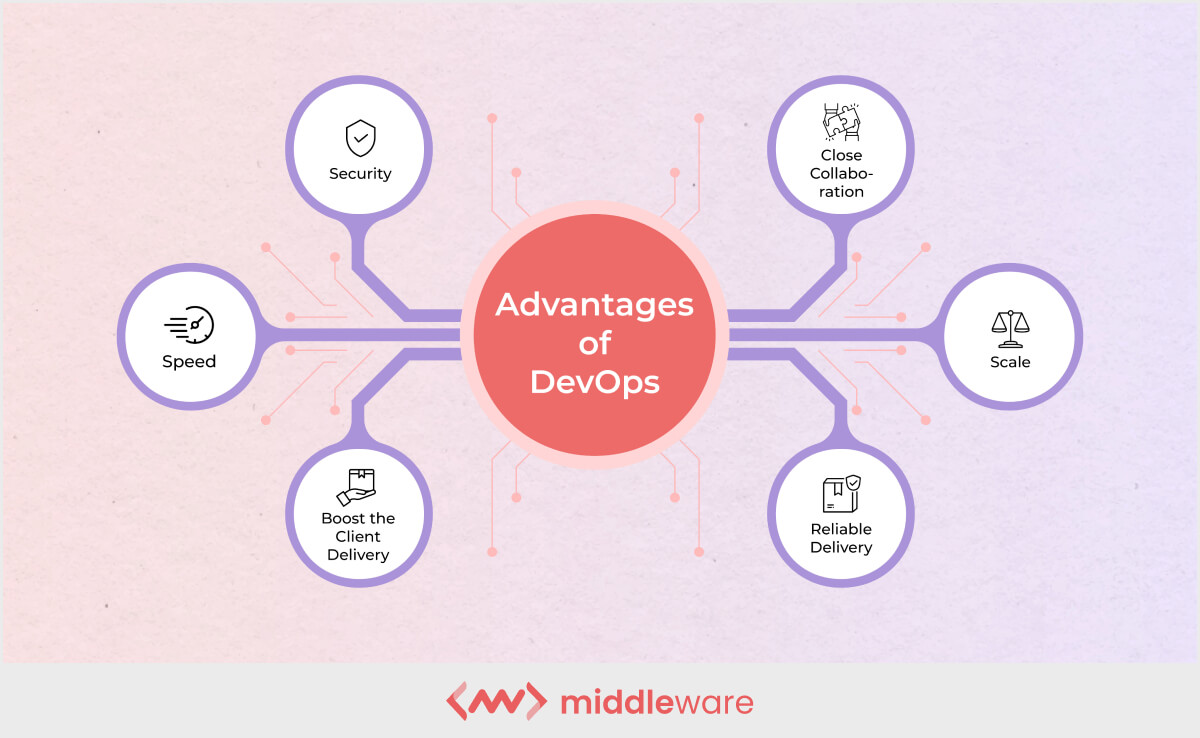
Speed up application development and services
Move quickly to develop an application for your customers, better adjust to shifting markets, and become more effective at generating business outcomes.
Thanks to the DevOps concept, your development and management teams can accomplish these goals. For instance, teams can take control of systems and change them more quickly thanks to microservices and continuous delivery(CD).
Boost the client delivery
Boost release frequency and speed so you can contribute to enhancing your product more quickly. You can adapt to client demands and gain a competitive edge more rapidly by releasing new features and resolving problems.
Continuous integration(CI) and continuous delivery(CD) automate the entire software release cycle, from development through deployment.
Reliable delivery
Optimize the class of application and infrastructural modifications so you can deliver consistently at a faster rate while keeping the ultimate user experience favorable. Test each change to ensure it is secure and functioning using continuous integration(CI) and continuous delivery(CD) techniques. In addition, you can keep up with performance in real-time with monitoring and logging techniques.
Scale application at large
Monitor and run your implementation of development operations at scale. As a result, you can handle complicated or changing systems effectively and with less risk using automation and uniformity.
Close collaboration
Construct more efficient teams using the DevOps model, which stresses principles like responsibility and ownership. Groups of developers and operation teams work closely together, divide tasks, and merge workflows. As a result, shortfalls are decreased, and time can be saved.
Security
Act quickly while maintaining compliance and authority. But how can you do that without sacrificing security? You can implement a DevOps strategy without compromising security by utilizing config management methods, automated regulatory standards, and fine-grained safeguards.
How is DevOps transforming enterprises?
An effective DevOps initiative requires a few key things to be successful. Primarily, it needs to be a culture of innovation where risk, trust, and regular feedback among all members are encouraged. However, developer and operation teams also need the appropriate DevOps tools and software to complete the task; culture alone won’t be enough to alter business endeavors.
The ability to instrument and monitor telemetry data across the cloud-native environment is crucial as technological tools develop. This ability, known as observability, uses distributed traces, metrics, logs, customer experience data, and standard protocols to assess the health of apps and the infrastructure that supports them at every stage of development.
Other benefits include:
Managing bugs & Issues
As an IT department knows, detecting and addressing software bugs is a top priority. This requires immediate action and a tried-and-tested workflow that all departments can follow. DevOps Azure is a continuous process that allows you to make changes rapidly, enhancing the efficiency of your software while releasing new features.
Without DevOps, productivity slows down or stops, damaging the customer experience.
Increasing customer satisfaction
Adopting DevOps practices can have significant benefits, including lower failure rates for new features, improved recovery time, and faster service delivery.
Continuous testing, implementation, and feedback loops promote quicker service delivery and happy customers. In addition, by streamlining the software process, the DevOps team can concentrate on building better products, and the operations department can enhance business delivery.
Who are DevOps engineers, and what are their salaries?
A DevOps engineer’s responsibility is to coordinate the demands of the development and IT operations teams in managing the life cycle of software development, from writing code to deployment to maintenance.
By bridging the gap between both the duties required to update an application rapidly and those that maintain its dependability, a DevOps engineer lowers complexity.
- The average salaries for DevOps engineers in 2024, categorized by years of experience, are outlined as follows:
- Freshers – 1 year of experience: $83,710/PA.
- Up to 3 years of experience: $109,234/PA.
- Up to 5 years of experience: $126,399.
DevOps best practices
If you want your organization to be able to innovate faster, there are a few DevOps practices you can implement.
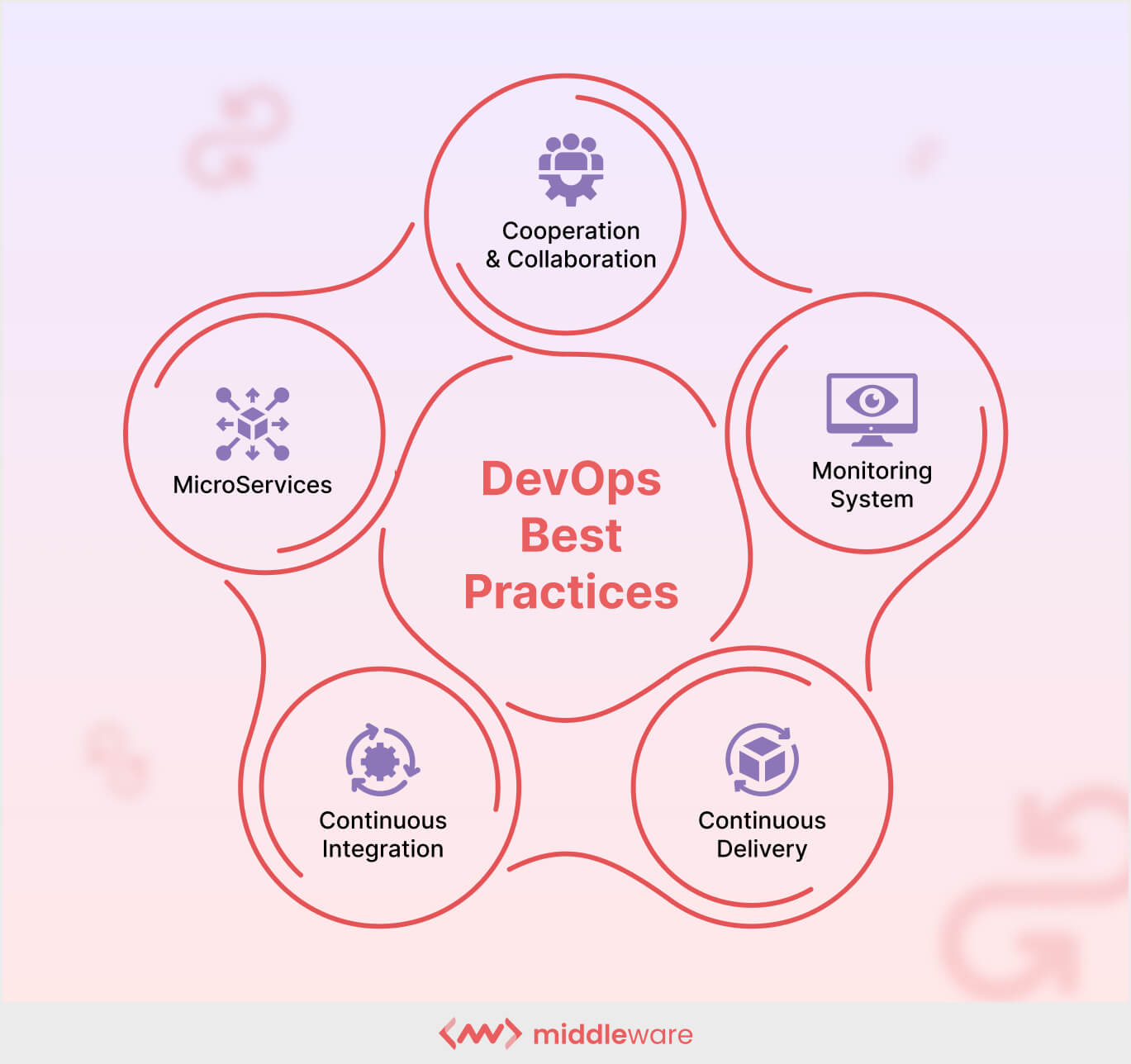
Subtle changes are typically more gradual compared to conventional releases. As a result, each deployment is less dangerous when updates are frequent but minor. In addition, they enable teams to identify the most recent deployment that introduced the problem, which speeds up bug fixes.
Companies employing a DevOps model release updates significantly more often than companies using conventional software development processes, though the frequency and magnitude of updates may vary.
Let’s discuss some of the best DevOps practices:
1. Continuous Integration
Software engineers that use continuous integration constantly integrate the changes of their code into a common GitHub repository, followed by automated builds and testing. Continuous integration’s main objectives are to detect and fix issues more quickly, enrich the effectiveness of the software, and shorten the time required to verify and publish new software upgrades.
2. Continuous delivery
A “continuous delivery” development method involves automatically building, testing, and getting code updates ready for production deployment. It advances continuous integration by delivering all code alterations to testing or production environments after the build process.
3. Microservices
A single application can be built as a collection of microservices by employing the microservices architectural design strategy. Each service operates as a separate process and interacts with other services via a direct interface and a simple method, usually an HTTP-based API (Application Program Interface). Microservices can be created using a variety of frameworks or computer languages and deployed individually, as a unified platform, or as a collection of services.
4. Monitoring system
Companies keep track of analytics and logs to evaluate how infrastructure and application performance affects how customers use their products. Companies can gain insights into the underlying causes of issues or unforeseen changes by gathering, classifying, and analyzing the data and logs created by applications and infrastructure.
As services must be accessible around the clock and as the frequency of application and infrastructure updates rises, the monitoring system becomes more crucial.
5. Cooperation & collaboration
One of the most important cultural factors of DevOps is improving communication and cooperation inside a business. By physically combining the tasks and workflows of development and operations, cooperation is established through DevOps technologies, and the application delivery process is automated by employing any communication tools, such as chat apps. For example, the developer and operational teams can establish deep cultural norms on open communication.
What is Observability in DevOps?
Observability in DevOps refers to the software tools and processes that assist Dev and Ops teams in logging, collecting, correlating, and analyzing vast amounts of performance data from a distributed application in order to gain real-time insights.
Observability in DevOps gives teams the ability to efficiently oversee, rework, and improve the application to provide a better user experience.
DevOps challenges
How can you get the most out of DevOps? There are a lot of DevOps challenges to overcome. Here are the top challenges to DevOps adoption. Read more here.
1. Developers vs. operations team mentality- In many companies, the operations group struggles to catch up with high support levels. In contrast, developers seek to experiment and make changes as quickly as possible. One of the technological difficulties with DevOps is this.
2. Traditional Infrastructure to Microservices- Depending on how long they have maintained the organization, sophisticated infrastructure and older frameworks and programs might be a concern. However, the most significant difficulty in implementing DevOps is switching from one outdated infrastructure to another.
3. Focusing too much on tools- The fascination of tackling DevOps can make new tools on the market appear as though they can address any problem under the sun. However, as new tools enter the market, every business must train its workforce to use them while adhering to all security precautions and seamlessly integrating with the infrastructure.
4. The discomfort of change- The switch to DevOps may seem frightening to stakeholders and team members. It can be very challenging to transition across cultures. It is essential to realize that a DevOps transition shouldn’t be abrupt; rather, it should be gradual and fluid. As people become used to the DevOps culture and learn the several ways they can contribute to the development cycle, everyone will be able to accept it.
Top DevOps tools
Instead of using just one tool, DevOps operates in a cross-functional manner, utilizing a variety of tools with a variety of functions. As a result, the DevOps tools are helpful at every stage of the software development lifecycle, from development to monitoring to deployment.
Middleware
Middleware is an integrated, scalable, cloud-native observability system that will help you un-silo your data and insights from all your containers, empower you to identify root causes, solve issues in real-time, and give you the best value for money with a platform that fits your specific needs.
Bring all your metrics, logs, and traces into a single timeline, and empower your developers and DevOps to debug and fix the issue faster—reducing downtime and improving the user experience.
Jenkins
Jenkins is a free and open-source automated server that aids in automating software development procedures, including developing, enabling continuous integration(CI) and continuous delivery(CD), releasing, and testing.
Teams can monitor repetitive operations, swiftly spot difficulties, and seamlessly incorporate changes thanks to this DevOps tool.
Ansible
Ansible is a DevOps tool for various IT operations, including application management, provisioning, and deployment.
Ansible is employed in multi-tier deployments, and rather than managing each component independently, it models the whole IT structure into a single deployment. As a result, the Ansible structure does not need the usage of any agents or particular security architecture.
Closing gap
DevOps is the foundation of IT agility and the key to successful digital transformation. However, organizations must undergo cultural, organizational, and process changes to start their DevOps journey.
Several essential DevOps practices, including automation, continuous integration, continuous delivery, and observability, aim to streamline the software development process and make it more efficient. By automating repetitive tasks and establishing a continuous integration and delivery pipeline, DevOps can help software development teams to improve their speed, quality, and efficiency.
DevOps is not just about tools and processes but also about culture and collaboration. DevOps aims to bring developers and operations teams together to work more closely and effectively and to understand each other’s needs and objectives better. In a DevOps culture, everyone is responsible for the quality and delivery of the software, and there is a strong focus on collaboration and communication.
DevOps is worth considering if you want to improve your software development process.
FAQs
What is DevOps
DevOps is a set of practices and processes that helps organizations to create and deliver applications and services by aligning software development with IT operations. Further, it advocates automating various IT processes (including CI/CD and monitoring), which can help further to improve the efficiency and quality of new service delivery.
What exactly does DevOps do?
DevOps is a combined process that helps organizations to release, operate and monitor applications deployment throughout the software development lifecycle. DevOps can be automated using observability tools to find bugs and notify developers to fix issues.
Where can I learn more about getting started with DevOps?
You can learn about how to get started with DevOps here.
How does DevOps help drive business results?
DevOps is all about delivering continuous value to customers. Therefore, the results of adopting DevOps must be measured with business objectives. DevOps teams align around these objectives and achieve them using short-release cycles. These cycles allow agile responses to the market and continuous learning through customer feedback.

